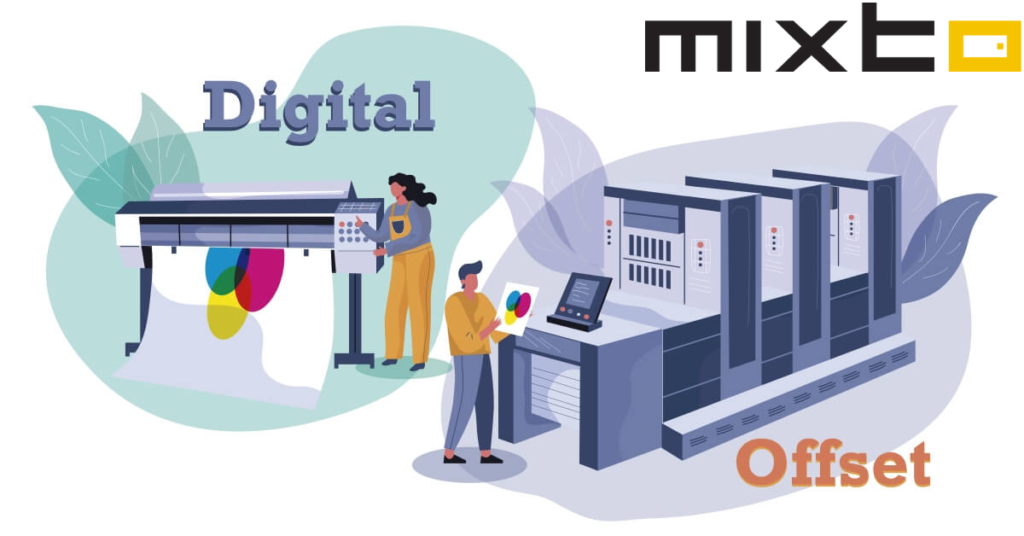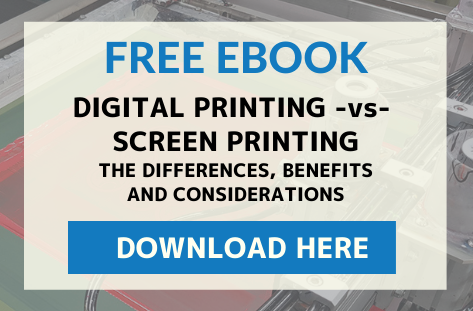The Definitive Guide to 24??media
The Definitive Guide to 24??media
Blog Article
The Best Strategy To Use For 24??media
Table of Contents4 Easy Facts About 24??media Shown24??media for DummiesThe Main Principles Of 24??media Not known Factual Statements About 24??media What Does 24??media Do?24??media - The Facts
This is only feasible with Digital Printing, and it results in a brand-new degree of customization. Litho Lamination (Offset Printing) is a traditional printing technique and was one of the most popular selection up until lately. Litho is the process of printing onto a paper lining board, and after that laminating flooring that onto corrugated.Right here are a few of one of the most notable ones: Despite the fact that other printing kinds, like countered and screen, can produce great high quality, digital printing uses remarkable outcomes. Unlike some various other methods, the quality of an initial item coincides as the last. The digital printing process entails a direct transfer of the ink to the substratethat's why it's much quicker than various other printing choices.

Digital printing is extremely economical. A printing maker and ink or printer toner, other devices isn't called for. The fee might vary depending upon the ink high quality, maker complexity, and type of substratum. Contrasted to other methods, electronic printing is usually less expensive. When it concerns customising a print task's final product, electronic printing is quick and flexible.
The 25-Second Trick For 24??media
That's why digital printing is a recommended approach for volatile printing tasks. Digital inkjet printing reduces the quantity of waste since it just sends out ink to the components to be published.
While electronic printing is very advantageous, other methods are still in use. Offset printing (or offset presses) is a conventional printing method.

24??media Fundamentals Explained
Screen printing does not apply pressure to the product. That's why it's usually utilized for printing on delicate substrates like balloons or thin fabrics. Point of sale stands. A more vivid, saturated, and brilliant finishBetter colour matching capabilitiesCost-efficient for huge batches Made complex and time-consuming setupHigh prices for low-volume printingOnly one design per batchResolution of pictures is commonly lower top quality
The printer sprays numerous small ink beads on the surface to create the wanted photo. Today, industrial inkjet printer innovation is changing conventional high-speed printing presses.: Printer use a laser to transfer the digital picture to the surface area. The laser returns and forth to create static electrical energy throughout the printing process, releasing the warmed toner onto the surface.
Laser printers are quicker yet sometimes featured higher upfront expenses. Laser printers have a tendency to have a greater lasting ROI than inkjet printers. Digital printing is evolving rapidly. Thanks to its rate, cost-efficiency, and quality, it's likely to render older printing technologies worthless in the near future. By maximizing digital printing abilities, you can produce high-quality products and advertising and marketing products while promoting the online reputation of a modern company.
When preparing for your company's operational or promotional print product, it is essential to choose one of the most effective sort of printing method. This can aid conserve money and time. There are several aspects that go into deciding whether a task must make use of digital or offset presses. Variables that enter into deciding the print procedure a project needs will be clarified in this short article.
Little Known Questions About 24??media.
This printing process is mostly used for smaller jobs with a fast turn-around time. Countered printing is the process where the photo is moved from a steel printing plate to a rubber covering, and then to the paper to create a top notch, clear image. Countered printing is used for larger projects that need exact colour representation.
Estimates can vary based on a project's requirements, a useful guide to deciding which printing process your job needs is to calculate run size. If your task needs much less than 1,000 duplicates, it might be best to print using electronic presses. If the job calls for greater than 1,000 duplicates published, it might be much more affordable to use countered printing.
Digital printing has a low set-up price and a high run-cost, indicating it is the excellent printing method for much shorter runs. The factor that electronic printing has a low set-up price is since plates do not need to be made and examples do not need to be published. The toner that electronic presses utilize is pricey, which is the reason why it has a greater run-cost.
Countered presses are created projects with futures considering that they have a high set-up price and a low run-cost. The reason that offset printing has a high set up expense is because journalism requires big metal plates to be made in order to transfer the photo. It has an intensive cleansing and maintenance process that requires to be done between different tasks.
The Greatest Guide To 24??media

Examples of countered printing projects created at Printing Unlimited. Throughout the printing process digital presses, like laser printers, utilize printer toner for the manufacturing of colour.
Points of personalisation can include a message, photos or colours that associate with the client's rate of interest. There is a vast variety of substrates that can be made use of when publishing digitally on a flatbed press. Digital Printing. Using our electronic printers, we are able to print on nearly any kind of substratum up to two inches thick
Discover Phillip Akhzar's trip, the Owner and Chief Executive Officer of Arka, bringing 16 years of competence in product packaging and supply chain logistics. Find out more on Arka. Screen printing a long-lasting standard print strategy, has actually weathered the developing print landscape in time; this technique includes moving ink via a mesh display onto a surface area, producing brilliant and long lasting prints.
Regardless of its merits, screen printing has limitations. One disadvantage is the complexity and cost of establishing initial displays. For small tasks, configuration costs can be fairly high, making it less economical than different methods. Recreating elaborate information postures a difficulty. While standing out in bold layouts, screen printing might have problem with fine details and detailed patterns, a factor to consider for projects requiring high intricacy.
7 Easy Facts About 24??media Shown
Quick Turnaround: Considering that electronic printing is reasonably faster compared to the standard methods, no time will certainly be occupied by screen preparation, as a result, making it ideal for the completion of time-bound projects that may require modifications at the last minute. Adaptability in Products: Using digital printing, one can print on products like paper, textile, plastic, and many others.
Limited Color-Matching: With respect to color, digital printing can not specifically replicate the shades used much like in conventional display printing. This limitation will certainly influence work needing a best suit with the shades used in the screen printing process. Long-Term Sturdiness: Having the capability to publish in a fashion that is both vibrant and thorough, one might argue that the long-term sturdiness of these prints on specific materials can be doubtful, with basics lots of events having chosen screen printing for its even more durable, enduring result.
Report this page